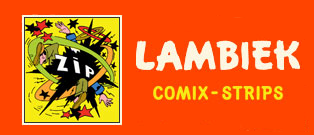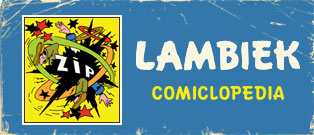'Private Strokes' (mail order digest).
Raye Horne was an American underground comix artist, who mostly worked under the pen name Wiley Spade. He was responsible for several adult comics in cooperation with Larry Fuller, including White Whore Funnies (1975), Gay Hearthrobs (1976), Adults Only! (1979-1987) and a series of mail order digest comics. Historically, their most notable production was 'Gay Hearthrobs' (1976), the first all-homosexually themed comic book in history. A regular character in Horne’s comix stories was his own alter ego Wiley Spade. The character reappeared in several of Fuller’s comics, including the mail order digest 'Private Strokes'.
Early life
Thomas W. "Raye" Horne was born in 1944 and raised in Greensboro, North Carolina. At age 18 he enlisted in the U.S. Navy and served aboard various ships at home and overseas in Japan. During this time he was an amateur boxer, as well as an avid comic book collector and prodigious reader of hero-based fiction. Upon discharge he relocated to San Francisco, where he worked for more than two decades as employee with the Greyhound Bus Company. Horne always loved to draw comics and he began to seriously pursue this interest once he was settled in. He avidly studied the works of many comic masters, too numerous to name, but his main influences were Milton Caniff, Will Eisner, Alex Toth, Harold Foster, Johnny Craig, John Severin, Bob Powell, Alex Raymond, Mort Drucker and Frank Frazetta. Horne was completely self-taught, drew constantly and spent literally the rest of his life polishing his craft. In those early years he submitted a great deal of work to various publishers. Despite receiving several rejection slips, he was not one easily discouraged and it only fueled his creative fires.
'White Whore Funnies' and 'Adults Only'. Cover artwork by Wiley Spade (Raye Horne).
Underground comix
Horne's persistence began to pay off when he met San Francisco comic book store owner, collector and publisher Gary Arlington. Arlington had many connections and introduced Horne to future underground comix publisher and artist Larry Fuller. They met in 1971, about a year after Larry Fuller had created, drawn and published 'Ebon', the first African-American superhero comic. Despite its historic importance, 'Ebon' had little impact on the market. Fuller, a U.S. Air Force veteran, therefore attended the San Francisco Academy of Art, financed by his G.I. bill. Since Horne and Fuller knew no other African-American comic book writers and artists other than themelves, they got along well. They co-created several characters and stories. Back in the early 1970s, underground comix were all the rage, but what Fuller and Horne really wanted to create were heroic adventure comics. They produced several titles in different genres, like westerns, SF, superhero comics and sword & sorcery, but only one story, 'Rawhide Carson', saw print in The New Funny Book #3. By lack of experience, they just went along with the underground movement, since it was easier for independent publishers to launch their own comic material, than to apply to one of the mainstream comic book companies.
'Rawhide Carson' - promo poster of B-movie Western character developed by Horne and Fuller. Only one story was ever published.
White Whore Funnies
In the early 1970s Fuller and Horne decided create a full sized comic under the imprint FulHorne Productions. Fuller later changed the name to L. Fuller Presents and then to Inkwell Ink, since he had become the only funding source for such ventures. Inspired by the success of Bill Griffith's pornographic comic book Young Lust and similar titles, they created White Whore Funnies #1 (October 1975). White Whore Funnies could best be described as a send-up of relations between white women and black men, replete with plainly outrageous, but well-drawn sexually explicit content. The book took no prisoners, skewering all parties from every angle with what they thought at the time was well disguised and sneakily inserted social commentary. As underground comics went, the book was a hit and spawned many reprints. Horne and Fuller were responsible for all content in the book, but signed with tongue in cheek pseudonyms, such as Wiley Spade (a "spade" is a derogatory term for a black person) and A. Christian Black. They wanted their names to be disassociated with "hardcore smut", once they later "reached the top!". In the end, such precautions were unnecessary, since neither of them would ever work in mainstream comics. Horne drew the cover, based on a Fuller sketch and illustrated about half the stories, including inking Fuller's first 'Kid Cunt' story. The title character, Kid Cunt, shot two cowboys in this western tale - Bull Horne and Blackie Fuller- both caricatures of Horne and Fuller.
'Bull Horne Shootout' - 'White Whore Funnies' #1 (pencils by Larry Fuller pencils, inking by Wiley Spade, AKA Raye Horne), 1975.
Gay Heartthrobs
In the Spring of 1976 Raye Horne and Larry Fuller published the first issue of Gay Hearthrobs, unintentionally misspelled (the correct spelling would be "heartthrobs"). Horne created the cover and drew a couple of stories. However, to create an authentic homosexual erotic comic book, Horne and Fuller hired several local artists who were gay themselves and could thus provide genuine titillating homosexual porn.
The New Funny Book #2
Gay Heartthrobs #1 sold better than Horne and Fuller's previous title White Whore Funnies and they decided to try their hand at the "clean family stuff" they actually wanted to make. Soon The New Funny Book #2 (July 1978) followed, a full-size follow-up to an earlier 16-page digest, also titled The New Funny Book (March 1977). It wasn't a superhero comic book, but instead featured several humorous newspaper comic-style comics and a great cover by none other than Alex Niño. Despite all this, The New Funny Book #2 sold poorly, so they returned to what they knew worked best: erotic stories.
'Gay Heartthrobs', issue #1, 1976.
White Whore Funnies #2
White Whore Funnies #2 (1978) was promoted as the biggest underground comic of all time - 76 pages - with wrap around painted covers by a newly discovered artist "The Great" James Davis, house painter and shoe salesman, who exhibited raw power in his works, though he was not a cartoonist. This book used a wider variety of other artists, with multiple stories penciled by Larry Fuller and inked by others. Raye Horne (using his pseudonym Wiley Spade) had one story in this book, 'Ozzle & Harrial Bumsterp, Pardon Me'.
Work in the late 1970s and early 1980s
White Whore Funnies #2 sold well, leading to financing for other works, including Gay HeartThrobs #2 (March 1979), Adults Only Comic Magazine #1 (August 1979) and Adults Only Comic Magazine #2 (Fall 1985), in which Horne did a great deal of work. He had developed a real flair for comics with sexual content, due in large part to his ongoing fascination with x-rated movies and what he called "fine girl art stuff" by artists such as William Ward, Bill Wenzel, Pete Wyma, Jefferson Machamer and many others. He often joked he had some of the worst luck in the world with women, something he used to great advantage in comic stories with his fictional alter ego - Wiley Spade - doing everything from contracting fictional exotic diseases; while "romancing" the most beautiful and voluptuous women he could conjure up artistically. A true master at the art of humorous self-deprecation, Horne also poked fun at himself.
'Mean Ole Pause' splash page - Adults Only! #1.
Horne's comics ran in Fuller's full sized books Adults Only!, and the digest and mini comics Private Strokes and HandJob Library series, the latter two sold mostly by mail and at conventions. By now, both he and Fuller had also begun to venture outside their accustomed comix venue. In 1977, using his real name, Horne illustrated Mike Friedrich's Star*Reach #9 , namely the story 'Homestone' by Yves Regis Francois, inked by Danny Bulanadi. An unexpected but continuous source of income developed when he started an ongoing series of advertising comics for small local businesses, among them a shoe repair store, a storage unit service, and a few small restaurants. Sadly, though these were of similar quality as his best comics stuff, much of this work is lost to posterity with only a few scattered pieces remaining.
'Private Strokes' (mail order digest).
Final years and death
During the course of their almost 25-year association, Horne and Larry Fuller experienced many successes, but also had numerous mostly creative difference disagreements and some business related issues, the combination of which led to a complete breakup in 1985, during which they continued their mutually loved pursuits, only separately. A chance meeting several years later outside of a comic book store - of all places - led to them renewing their association and spending many hundreds of hours in new comics-related discussions and creativity. For both it was just like old times. They were on the verge of beginning a new publishing phase when Raye Horne died of a sudden heart attack in 1995. Earlier, Horne had been visiting his doctor more frequently, but always assured his friends and relatives that there was "nothing to really worry about". As a result his death at age 50 came to a shock to everyone. In a 2017 e-mail to Lambiek, Larry Fuller described that Raye Horne's "trademark snappy repartee, thigh slapping one-liners, unique wit and readily apparent personal charm are still missed by those who had the pleasure of his company for so many years."












